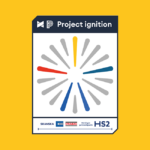PLINX & MachineMax launch Project Ignition with SCS
MachineMax and PLINX (data producer) have recently announced that funding has been approved for a new initiative called Project Ignition which will use data driven decision making to deliver improvements in efficiency, sustainability, safety and compliance, targeting net savings in excess of £1.1m.


Project Ignition is an innovative solution designed to transform the management of people and plant on infrastructure projects. It integrates cutting-edge sensor technology from Plinx, providing real-time feedback to operatives, with MachineMax’s advanced analytics platform, which captures and standardises data from plant, equipment, and site staff. This combination helps to reduce idling and CO2 emissions while enhancing safety and compliance. Live sensor data drives proactive plant management by increasing operator accountability, while MachineMax’s comprehensive reporting capabilities enable timely reviews of project-wide data. This empowers site teams to respond effectively to reports and alerts, fostering a safer, more efficient, and sustainable working environment


The first phase of this two-year project is underway and involves fitting 100 Plinx MachineSensors to plant supplied by UK hirers Lynch, Flannery, and M O’Brien Plant Hire. These retrofittable sensors, managed by SCS JV, require no integration into the equipment’s wiring loom and collect key data such as throttle response, location, and motion. This data provides the contractor with a detailed understanding of equipment activity on site.
The collected data will be processed and transmitted to the MachineMax platform, where it will be analysed and presented in a standardised format. This provides real-time insights, enabling the identification of opportunities to improve safety and efficiency across the project.
Phase one is expected to achieve annual savings in excess of £550,000 through better plant utilisation while also reducing idling by an additional 7%. This reduction will decrease CO2 emissions and fuel consumption, supporting the project’s sustainability goals.
The second phase, set to commence later next year, will introduce 350 TeamSensors (wearable devices). These sensors will complement the plant sensors by defining and monitoring safety zones, improving worker segregation from hazardous areas, and proactively managing hazardous interfaces.
Phase two focuses on enhancing safety by delivering actionable insights into potential risks. The technology will support speed limit enforcement, prevent unauthorised access to exclusion or restricted areas, and detect when people or plant enter designated safety zones. Additionally, it will help reduce risks such as falls from height, overhead lifting incidents, and collisions between people and machinery, contributing to a safer and more efficient work environment.
Sign up to our newsletter
Stay connected and find out about new features, components and modules as we announce them.
